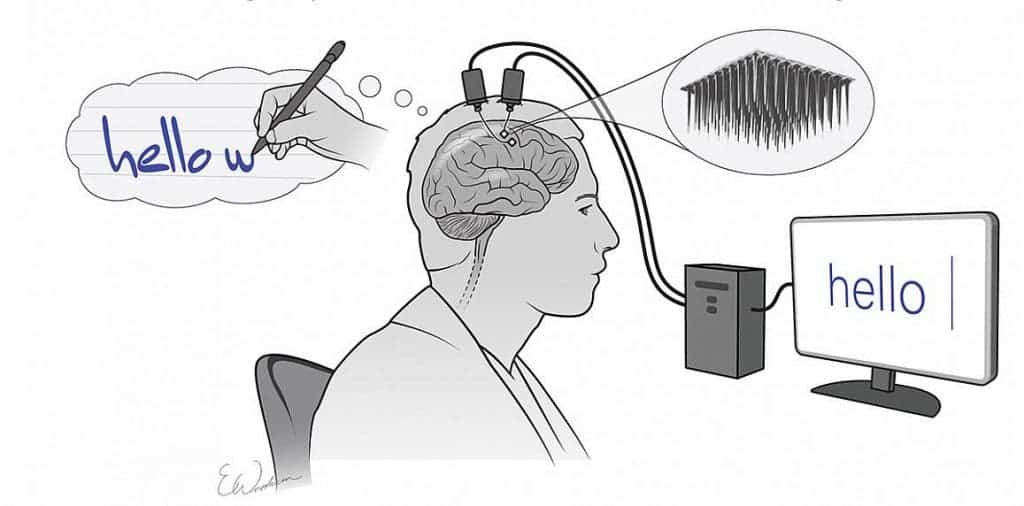
People who are completely paralyzed may soon gain access to a novel method of communication. In a new study published today, researchers at Stanford University described a brain-computer interface (BCI) that allowed a person who was paralyzed from the neck down to type on a computer solely by imagining they were making handwriting movements.
Previously, other brain-computer interfaces have restored communication to those who had lost the ability to speak or move by converting brain activity into signals that instruct a cursor on a computer screen to move. Then the user can point-and-click type to form a message.
However, these BCIs have been limited to a maximum of around 40 characters per minute, whereas the new handwriting-decoding BCI can reach a typing speed of 90 characters per minute with a 94% accuracy. This performance rivals that of able-bodied peers texting on their smartphone.
The participant had to imagine he was writing sentences as if his hand wasn’t paralyzed by imagining he was holding and pressing a pen on a piece of paper. A type of machine learning algorithm known as a neural network translated the specific brain activity associated with this movement into text in real-time.
As the participant imagined writing a letter or symbol, sensors implanted in his brain picked up on patterns of electrical activity, which an algorithm interpreted to trace the path of his imaginary pen. Credit: F. Willett et al./Nature 2021
This proof-of-concept shows that tapping into the brain signals associated with handwriting may lead to a much faster and accurate mode of communication even years after paralysis.
“We’ve learned that the brain retains its ability to prescribe fine movements a full decade after the body has lost its ability to execute those movements,” said lead author Frank Willett, a research scientist at Stanford. “And we’ve learned that complicated intended motions involving changing speeds and curved trajectories, like handwriting, can be interpreted more easily and more rapidly by the artificial-intelligence algorithms we’re using than can simpler intended motions like moving a cursor in a straight path at a steady speed. Alphabetical letters are different from one another, so they’re easier to tell apart.”
The same technique may be applied to almost any kind of sequential behavior. For instance, a similar interface may decode speech from someone who can no longer speak.
“While handwriting can approach 20 words per minute, we tend to speak around 125 words per minute, and this is another exciting direction that complements handwriting. If combined, these systems could together offer even more options for patients to communicate effectively,” said Krishna Shenoy, professor of electrical engineering at Stanford.
There are hundreds of thousands of Americans, and millions globally, who’ve lost the function of their upper limbs or their ability to speak due to spinal-cord injuries, strokes, and Lou Gehrig’s disease.
However, this BCI isn’t exactly for everyone. The study’s participant, referred to as T5, lost all movement below the neck due to a spinal cord injury in 2007. Nine years later, the Stanford researchers led by Jaimie Henderson, professor of neurosurgery, implanted two brain-computer-interface chips no larger than a baby aspirin on the left side of the patient’s brain. Each chip has around 100 electrodes that pick up signals from neurons firing in the part of the motor cortex that processes hand movement.
The recorded brain activity is sent via wires to a computer where the neural network decodes the signal into instructions for typing characters of text. It’s an extremely invasive procedure that will require further assessment in order to see whether the benefits outweigh the risks.
The findings appeared in today’s edition of the journal Nature.


